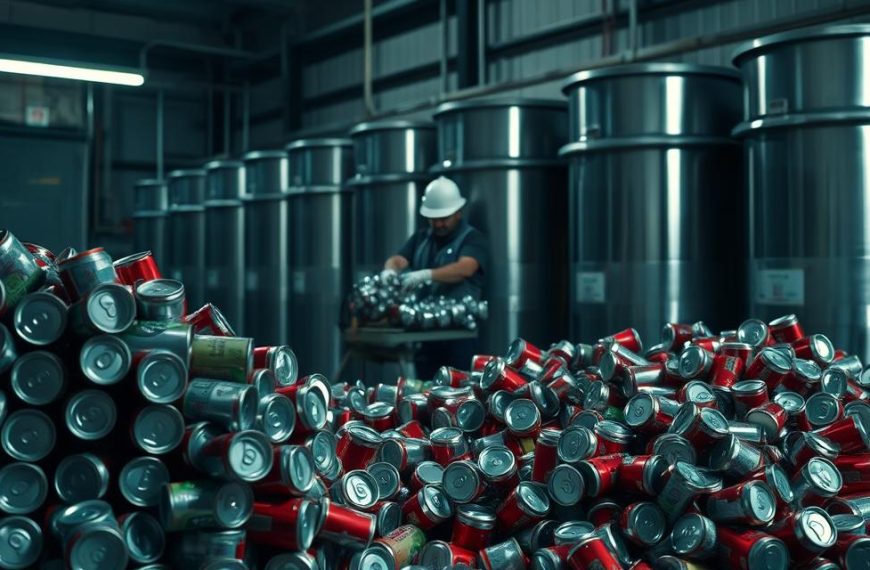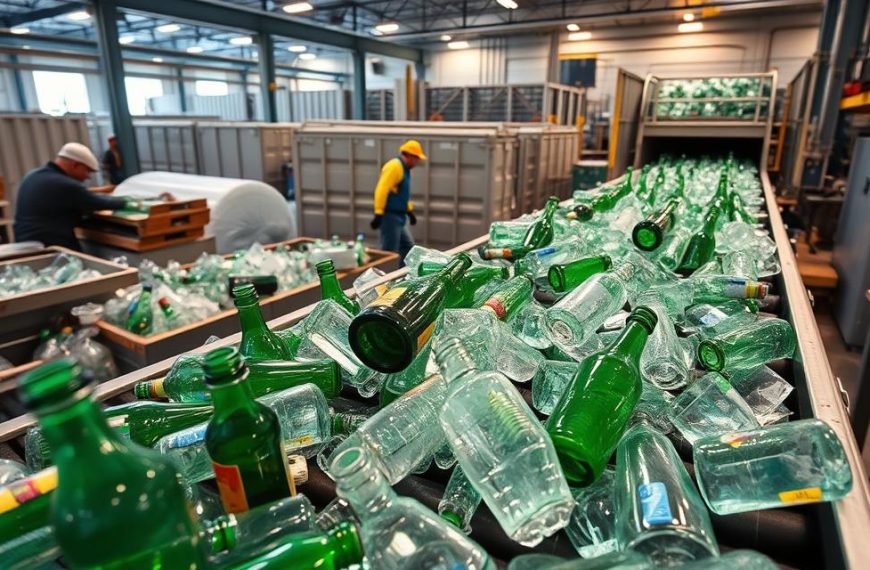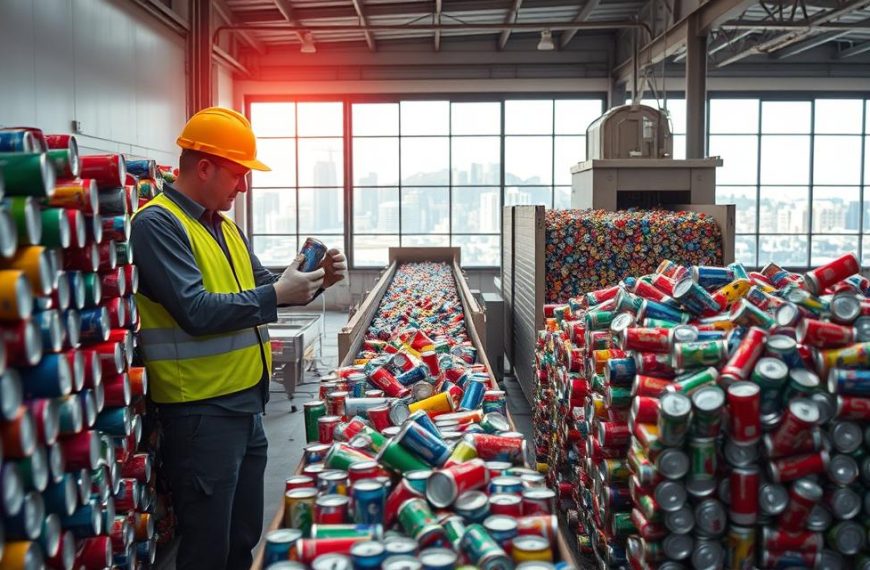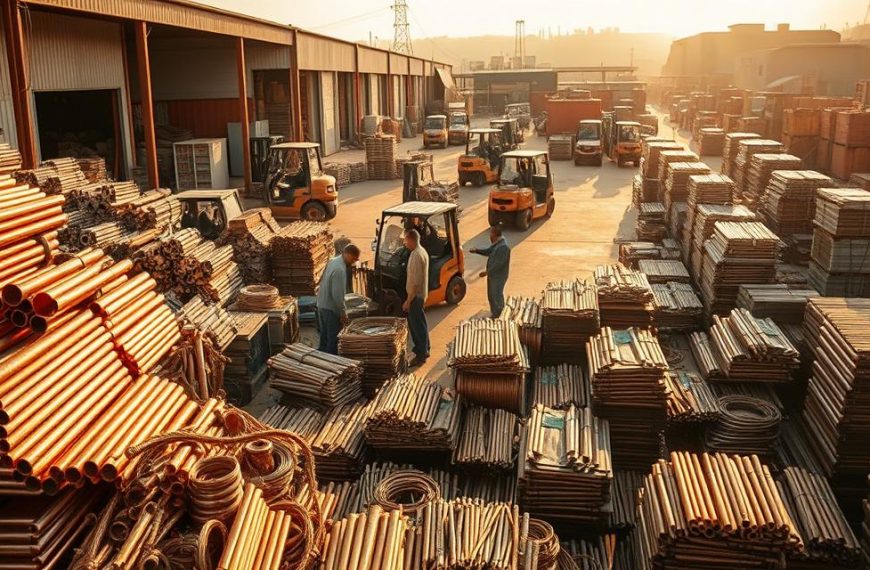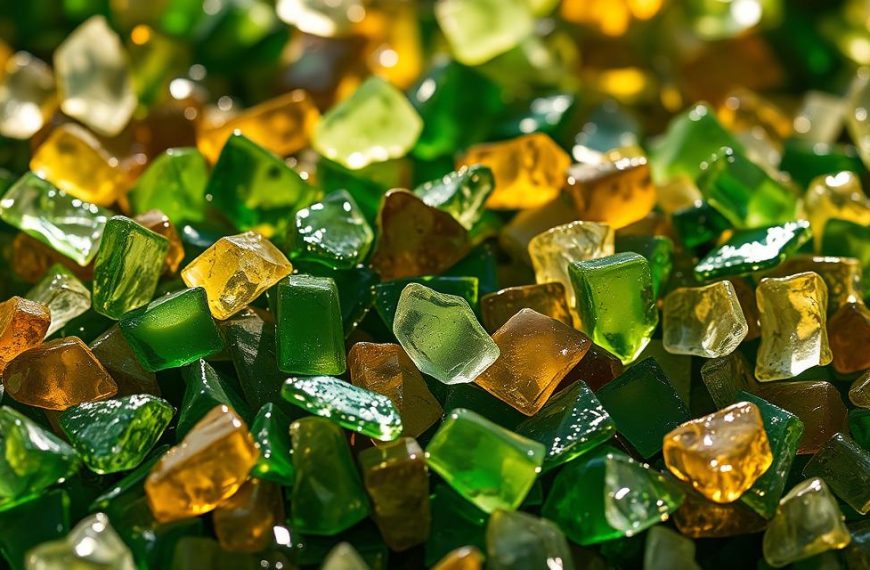Recycling certain materials has become more challenging since China’s National Sword Policy. This policy restricted the import of waste, pushing the U.S. to rethink its approach. Domestic recycling is now crucial for both environmental and economic reasons.
Local recycling centers play a vital role in managing waste effectively. They help reduce the carbon footprint and support material security. Creative reuse and mail-in programs are also gaining popularity as sustainable solutions.
For accurate and updated information, resources like Earth911 can guide you to nearby facilities. Staying informed ensures your efforts contribute positively to the environment and the lifecycle of products.
What Is Number 5 Plastic?
Polypropylene, a versatile material, is widely used in everyday products. It is identified by the resin code #5, part of a system created by the Plastics Industry Association. This system helps categorize materials but does not guarantee recyclability.
Understanding the Resin Identification Code
The resin identification code uses a symbol with chasing arrows and a number inside. This number indicates the type of plastic, not its recyclability. For example, #5 stands for polypropylene, a durable and heat-resistant material.
Many people mistakenly believe the chasing arrows mean the item is recyclable. In reality, the code is for identification purposes only. Always check local guidelines to confirm if a material is accepted.
Common Products Made from Number 5 Plastic
Polypropylene is used in a variety of products due to its strength and flexibility. Below is a list of common items made from this material:
| Category | Examples |
|---|---|
| Food Packaging | Yogurt cups, hummus tubs, syrup bottles |
| Personal Care | Deodorant containers, shampoo bottles |
| Medical Supplies | Prescription bottles, lab equipment |
| Household Items | Storage containers, bottle caps |
These items are lightweight, durable, and often reusable. However, their recyclability depends on local facilities and programs. Understanding the resin code can help you make informed decisions about disposal and reuse.
Challenges in Recycling Number 5 Plastic
The recycling landscape has shifted dramatically in recent years, posing new challenges for certain materials. Polypropylene, often labeled as #5, faces significant hurdles in today’s waste management systems. Understanding these obstacles is key to improving sustainability efforts.
Impact of China’s National Sword Policy
In 2018, China’s National Sword Policy drastically changed global recycling dynamics. The U.S. exported 66% less plastic waste after this policy took effect. This left many recycling programs struggling to adapt.
Before 2018, China processed a large portion of the world’s recyclable materials. Now, domestic facilities must handle more waste, but many lack the capacity. This has led to increased costs and logistical challenges for municipalities.
Current State of Recycling in the United States
Today, only 9% of plastics are recycled globally. Contamination rates, often exceeding 25%, make polypropylene economically unviable for many processors. This material is frequently diverted to landfills or incinerators.
Regional disparities also play a role. Some areas accept polypropylene in their recycling programs, while others do not. This inconsistency creates confusion and reduces overall recycling rates.
Compared to PET and HDPE, polypropylene recycling lags behind. Addressing these gaps requires investment in infrastructure and public education. By tackling these challenges, we can make plastic recycling more effective and sustainable.
Where to Recycle Number 5 Plastic Locally
Finding nearby facilities for polypropylene disposal can be straightforward with the right tools. Many communities now offer convenient ways to handle this type of material. Whether through recycling centers or curbside programs, options are available to help you manage waste responsibly.
Using Earth911 to Find Recycling Centers
Earth911 is a valuable resource for locating facilities that accept polypropylene. With a database covering 350+ material types across 100,000+ locations, it simplifies the process. Here’s how to use it:
- Visit the Earth911 website.
- Enter your ZIP code in the search bar.
- Select “Polypropylene” or “#5” from the material list.
- Review the results for nearby recycling centers.
This tool ensures you can check local options quickly and accurately.
Curbside Recycling Programs
Many U.S. communities include polypropylene in their curbside programs. However, acceptance varies by region. Some areas accept rigid plastic containers, while others exclude films or bags. Always check local guidelines to confirm what’s allowed.
Preparation is key. Clean items, remove labels, and sort materials properly. Caps and lids often require separate handling due to their density. Avoid wishcycling by ensuring only accepted items are included.
| Retailer | Drop-off Program |
|---|---|
| Whole Foods | Caps and lids collection |
| Target | Rigid plastic containers |
| Walmart | Selected polypropylene items |
These programs provide additional options for managing polypropylene waste effectively.
Mail-in Recycling Programs for Number 5 Plastic
Mail-in programs offer a convenient solution for managing specific materials. These services are ideal for those without access to local facilities. They ensure that items like medical containers, bottle caps, and dairy tubs are processed responsibly.
Matthew 25: Ministries
Matthew 25: Ministries specializes in redistributing medical containers. They process over 5 million units annually, providing a vital service for unused medicine bottles. Accepted items must be clean and non-childproof to ensure safety and efficiency.
TerraCycle’s Zero Waste Boxes
TerraCycle offers Zero Waste Boxes for various materials, including polypropylene. These boxes cost between $92 and $241, with an impressive 85% diversion rate. Specialty programs focus on dairy tubs, caps, and mixed PP, making it a versatile option.
For community initiatives, TerraCycle provides bulk pricing. This makes it easier for groups to participate in sustainable practices. Shipping best practices include consolidating items to reduce the carbon footprint.
| Program | Cost | Focus |
|---|---|---|
| Matthew 25: Ministries | Free | Medical containers |
| TerraCycle Zero Waste Box | $92-$241 | Mixed polypropylene |
Alternative services like Preserve Gimme 5 also accept specific items. These programs provide additional ways to manage waste effectively from home. By choosing the right program, you can contribute to a more sustainable future.
Creative Ways to Reuse Number 5 Plastic
Finding innovative ways to repurpose materials can significantly reduce waste and benefit the environment. Polypropylene, a durable and versatile material, offers numerous opportunities for creative reuse. By transforming everyday items, you can extend their lifecycle and minimize their impact on landfills.
DIY Projects and Upcycling Ideas
Upcycling polypropylene items is both fun and practical. Here are some ideas to get started:
- Seedling Starters: Use yogurt cups or hummus tubs to grow plants. Their durability makes them perfect for this purpose.
- Drawer Organizers: Cut and shape containers to create custom organizers for small items like pens or screws.
- Plastic Yarn: Turn bags into “plarn” for crafting reusable mats or baskets. This technique is eco-friendly and versatile.
These projects not only reduce waste but also add functionality to your daily life.
Reducing Plastic Waste at Home
Small changes in your routine can make a big difference. Start by choosing brands that use glass or aluminum packaging instead of polypropylene. Bulk purchasing can also cut down on packaging waste by up to 40%.
For prescription bottles, consider refill programs to minimize the use of new containers. Advocacy for corporate packaging changes can further drive sustainability efforts. Every step counts in creating a more eco-friendly lifestyle.
Conclusion
Taking small steps at home can make a big difference in managing waste effectively. Start by verifying local guidelines and preparing items properly. Explore alternative ways like mail-in programs or creative reuse to handle materials responsibly.
Every effort counts. When individuals focus on proper disposal, the cumulative impact benefits the environment significantly. For more guidance, refer to the EPA’s recycling guidelines or manufacturer take-back programs.
Advocate for better municipal policies to improve waste management systems. Share your success stories to inspire others. Together, we can reduce the lifecycle of products and create a more sustainable future.




